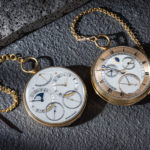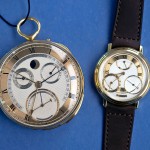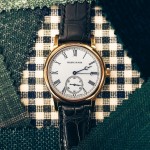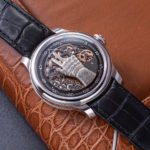Best of 2023: Independent Watchmaking
Ranging from the affordable to the open-sourced.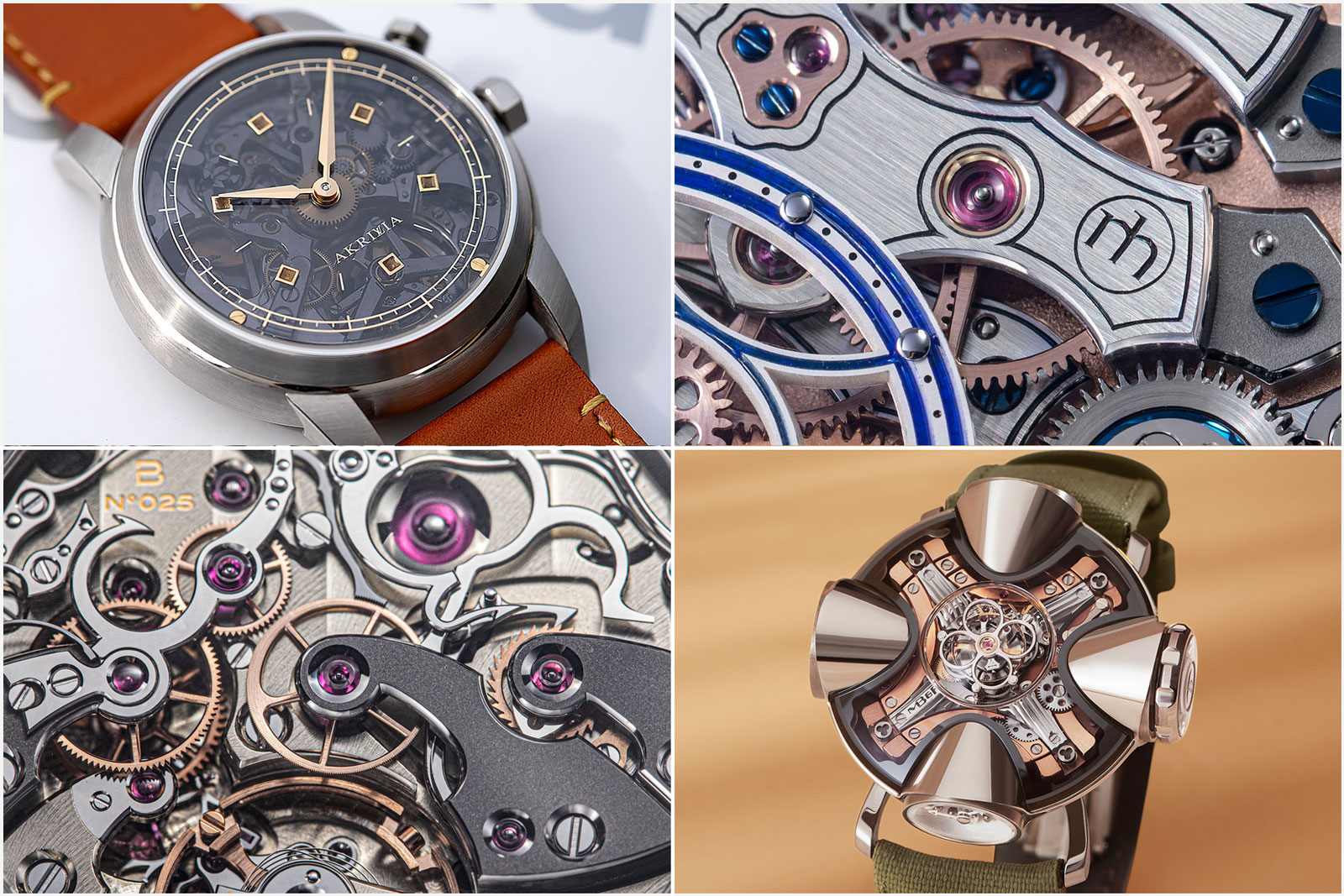
Independent watchmaking got hot in 2021, a phenomenon that accelerated into 2022 and continued in 2023. Perhaps because of that, the number of notable, impressive, or truly interesting debuts from independent watchmakers were few. Still, some of the 2023 debuts stood out for us. We rounded up our team’s favourites of the year, which range from Louis Vuitton and Rexhepi Rexhepi to Marco Lang’s open-source construction to an accessibly-priced Habring².
Richard Lee
Technical Editor
The Marco Lang Zweigeischt-1 is an impressively executed three-hand watch with the option of a novel shock-recording complication. However, it was released in 2020. Its inclusion in the 2023 list is because of the open-source technical plans for the entire watch, all of which were made public this year on Mr Lang’s website.
Mr Lang’s generosity in sharing his know-how is uncommon and to be applauded. The importance of this initiative can’t be understated. For one, it ensures the longevity of the Zweigeischt-1, since any competent watchmaker will have access to the design and construction, making servicing and repairs easier. Additionally, the accessibility of this information serves as a guidance and inspiration for new watchmakers who are attempting to create their own timepieces.
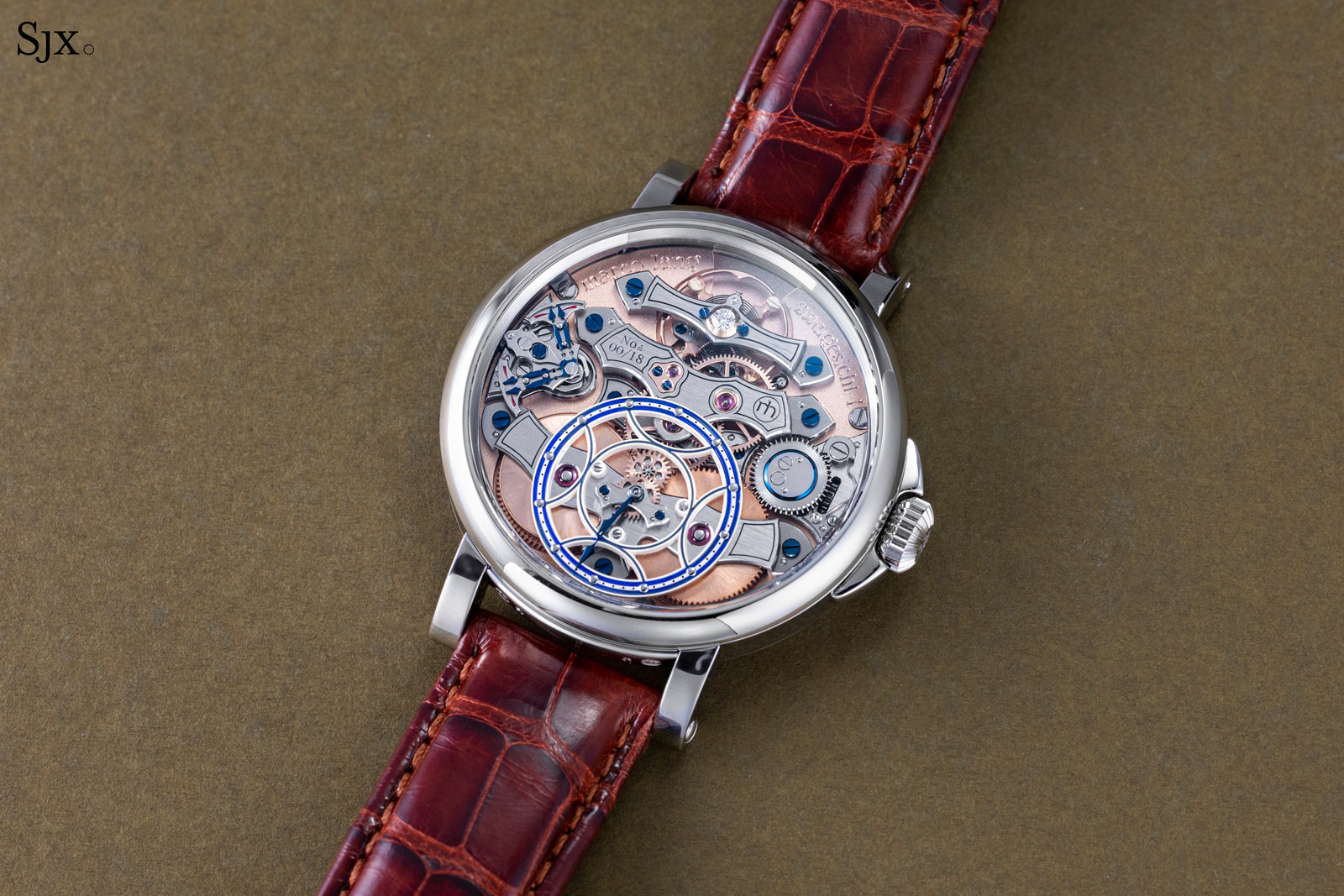
Garnering much attention this year, the Petermann Bedat Reference 2941 was lauded for being an original split-seconds chronograph design with an excellent level of movement finishing.
The visible components are highly attractive with no-compromise decoration. All the steel levers of the chronograph, for example, are bevelled and black-polished instead of having a conventional linear-brushed finish. And my personal favourite are the oversized jewel bearings that sit in bowl-shaped polished countersinks and serve to add colour to the movement landscape.
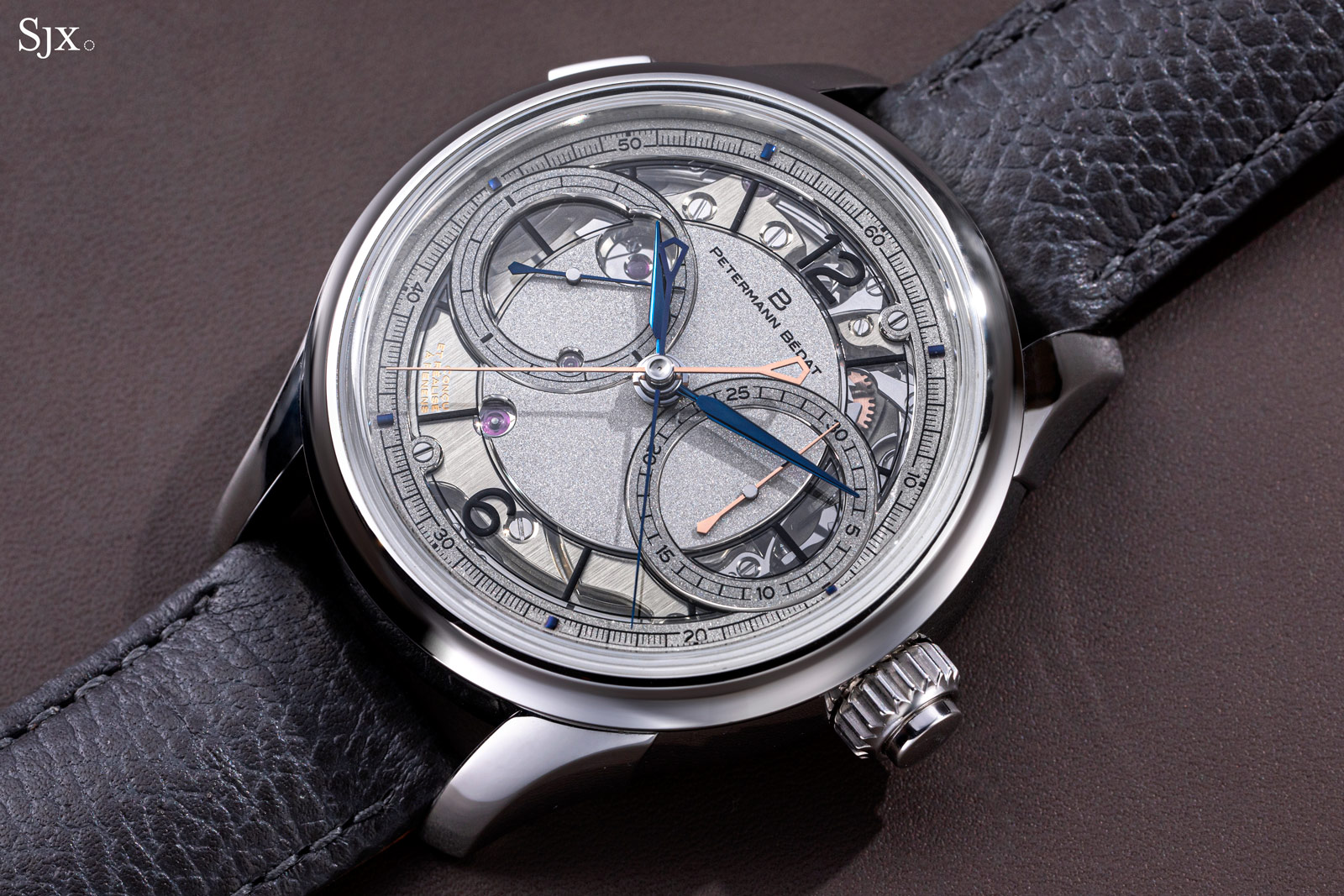
However, the finesse of the movement comes with a caveat: the split-seconds mechanism is hidden under the dial, instead of being a traditional construction and located on the back. A traditional construction would have been a perfect complement to the decorative capabilities of Petermann Bedat and the intricate, old-school chronograph mechanism. A rear-mounted rattrapante would have further improved the movement’s visual depth and complexity.
That said, the dial-side split-seconds is integrated well. While the base movement is based on the vintage Valjoux 13”’ family (that includes the famous cal. 23, 72, and 88), its going train had to rearranged to facilitate the split-seconds mechanism under the dial since the Valjoux 13”’ did not have a split-seconds to start with. In other words, a considerable amount of effort was required to integrate the split-seconds chronograph mechanism onto an existing base movement, rather than being merely an add-on module.
Being a small run of only 10 pieces – although a chronograph without split-seconds is almost inevitable in the future – the steep price of CHF243,000 is more justifiable, though it is still arguably too expensive for what it is.
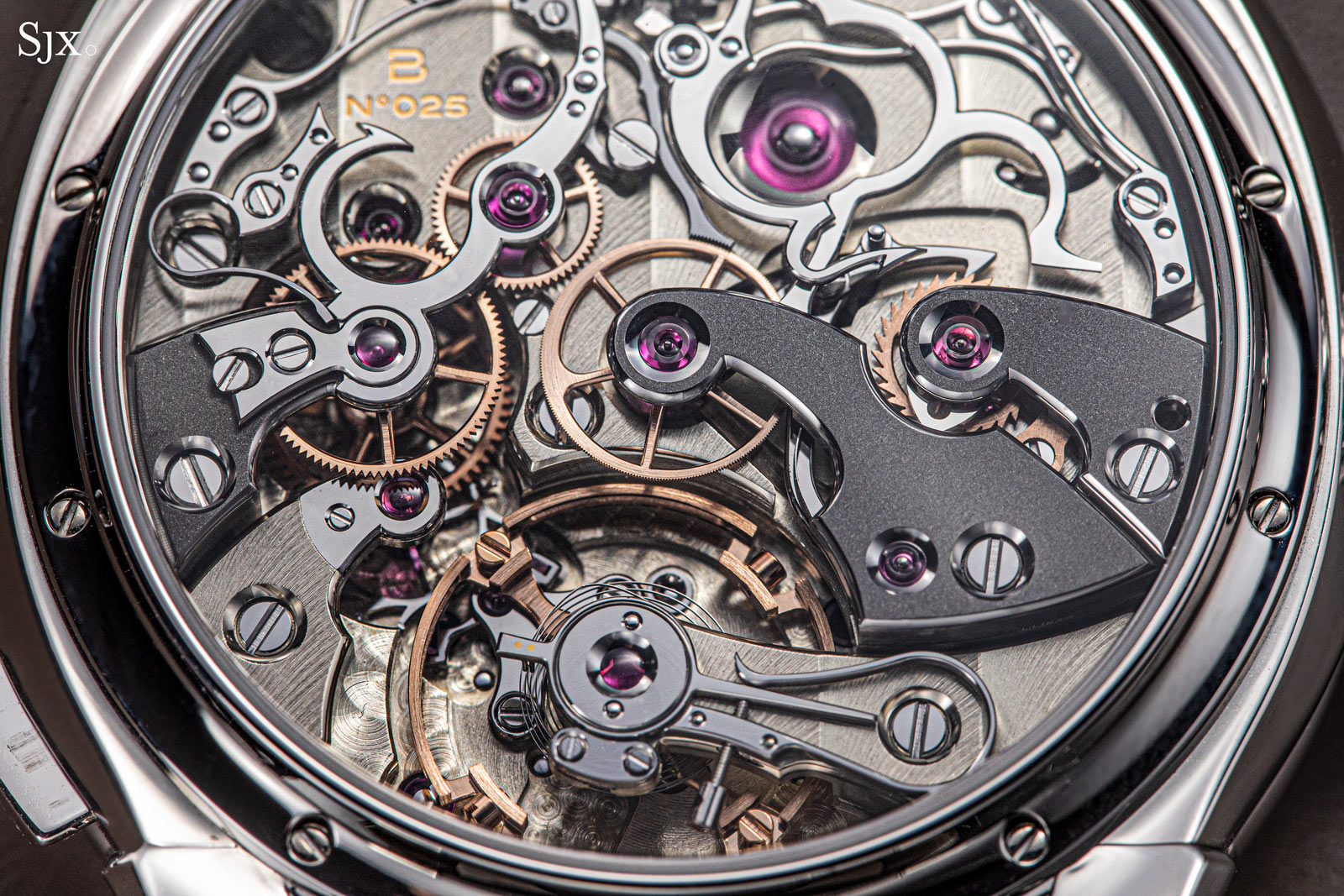
The antithesis of the classical watches above is the MB&F HM11 Architect, a futuristic sculpture on the wrist that takes the brand’s contemporary design a step further. And its rounded, organic form and fairly compact footprint makes the HM11 equally suited to men’s and women’s wrist, making a diamond-set version likely.
Resembling a kinetic sculpture with four lobes, the novelty of the design lies in its swivelling case, which serves to change the position of the dials while also winding the mainspring barrel. The entire case pivots around the central flying tourbillon that is the centrepiece of the mostly-sapphire case.
Despite the unorthodox design, the HM11 has straightforward indications in each lobe – each has a sub-dial showing the hours and minutes, power reserve, and temperature, respectively, while the fourth lobe is the crown for adjusting the time.
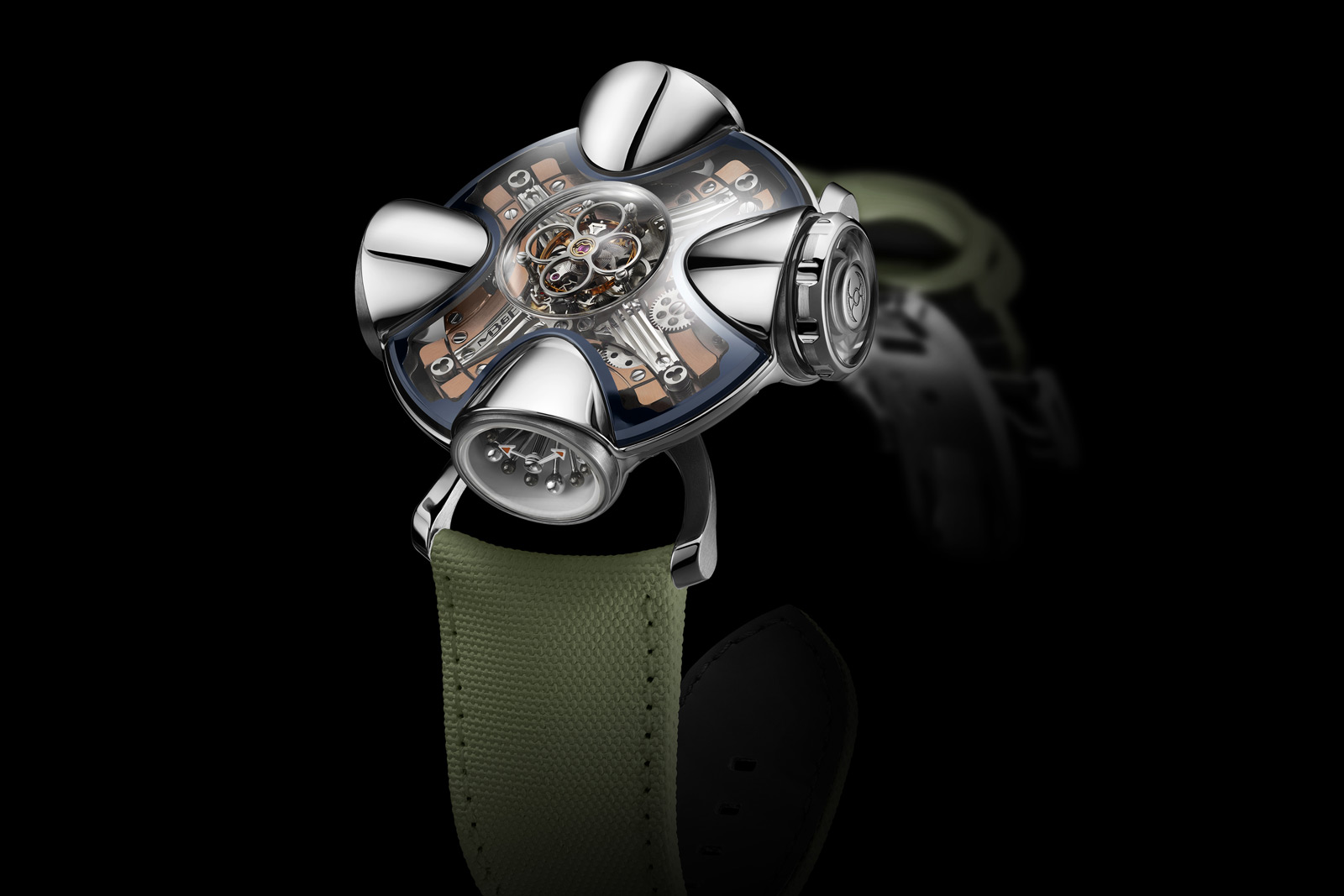
Unusually-shaped cases are the norm for MB&F, but that doesn’t make them easy to pull off, explaining their rarity in the industry at large. Notably, sapphire parts with complex geometries are difficult to manufacture, while ensuring such cases are water resistant requires smart engineering and many gaskets – the HM11 has 19 gaskets and sports a passable 20 m water resistance. A conventional watch, on the other hand, has just three to five gaskets for a rating of 50-100 m.
Despite the complex construction, the HM 11 has few actual complications, making the CHF198,000 price tag relatively steep. But there is nothing else quite like it, even in the realm of unconventional, sculptural designs, a niche where MB&F excels.
Brandon Moore
Technical Contributor
It was a big year for J.N. Shapiro. The American independent moved into a larger manufacture in southern California and debuted the Resurgence, probably the most thoroughly American-made watch in more than half a century. In striving to meet the lofty standard of “U.S. Made” as engraved on the movement, which requires “all or substantially all” of the parts to be made domestically, J.N. Shapiro has become one of the most vertically integrated independent brands.
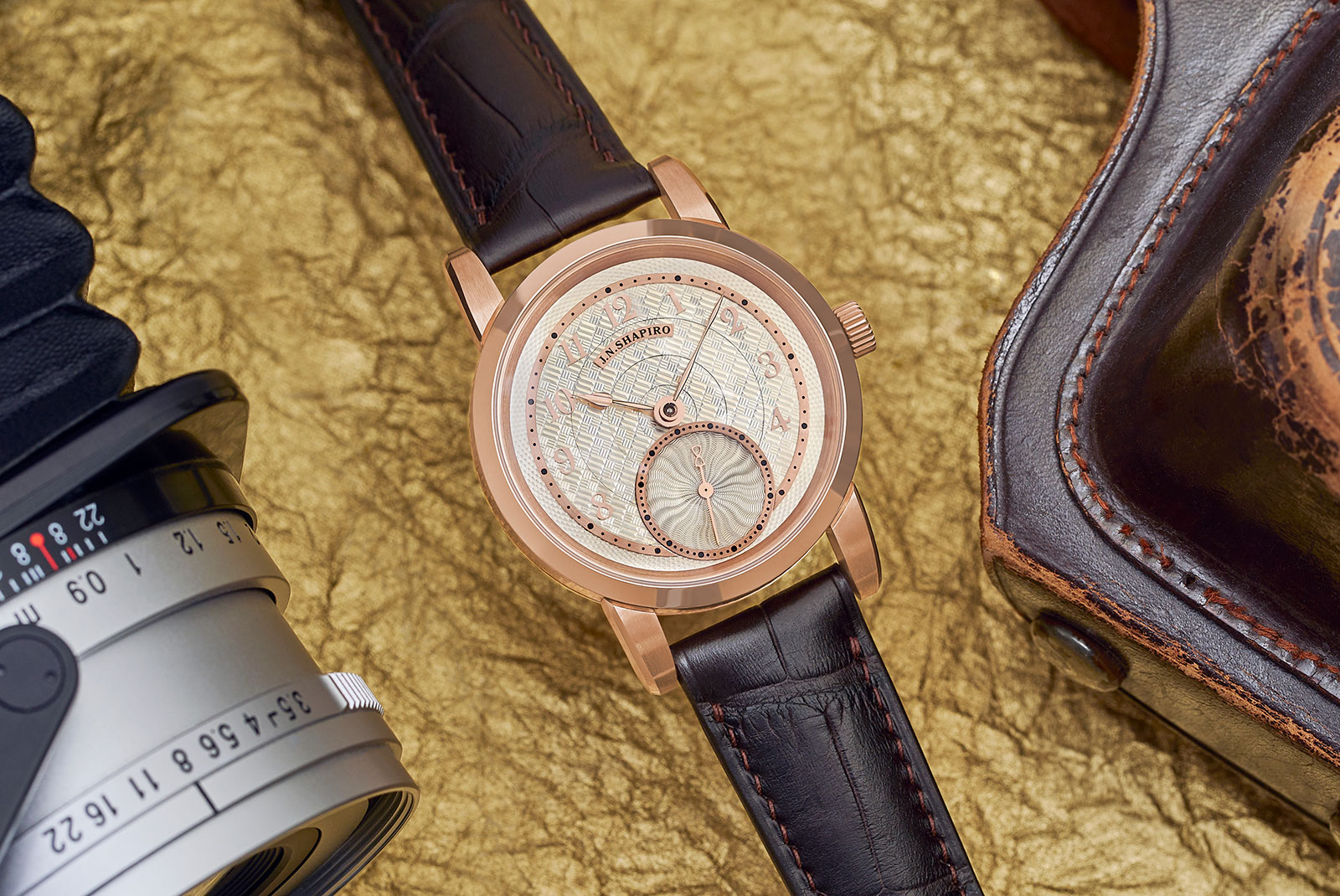
In fact, they’ve continued to make strides since the launch of the Resurgence and now even source American-made wire to craft balance springs in-house. In order to secure the necessary raw material, the brand had to place an order for 28,000 ft (about 5.3 mi or 8.5 km) of wire, despite needing just a fraction of that.
The need to manufacture as much as possible either in-house or domestically means that J.N. Shapiro doesn’t have the ability to tap on traditional industry suppliers that might be more price competitive or proficient. As a result, the Resurgence is expensive relative to the competition, with the gold version priced at US$85,000. The novelty and rarity of an American made high-end timepiece, however, ensures that it will have a ready clientele.
Another independent that largely flew under the radar this year is Hervé Schlüchter, who debuted the first watch under his own name, L’Essentiel Regulator. Once the head of Bovet’s manufacture, Mr Schlüchter says he learnt the art of decoration from Philippe Dufour before launching his own watch.
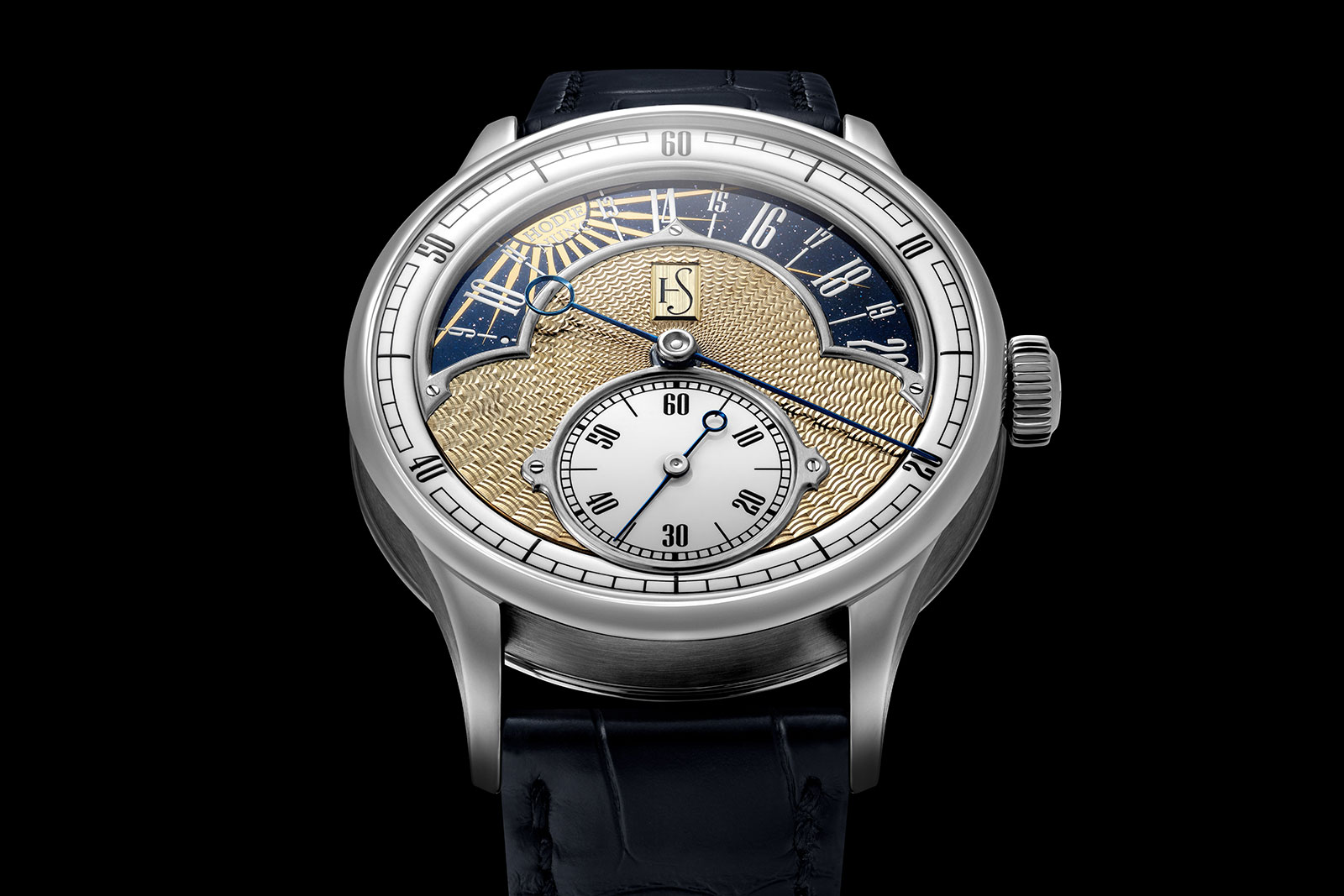
Despite being named “essential”, the watch tries to do it all. The dial is fired enamel, guilloche, and aventurine glass, while the movement is densely packed with decorative and stylistic elements. While the maximalist aesthetic can be overwhelming at first, the execution is outstanding. Furthermore, the movement design is distinct enough to feel like a very personal statement, enhancing its appeal.
More broadly, however, the Mr Schlüchter is just one of several independents that have emerged during the pandemic boom years. Majority of these new independents occupy the same space – elaborately finished time-only watches – leading to what feels like an oversupply of the same thing. Which of these brands will still prospering several years from now is unknown, but it’s practically a certainty that not all will.
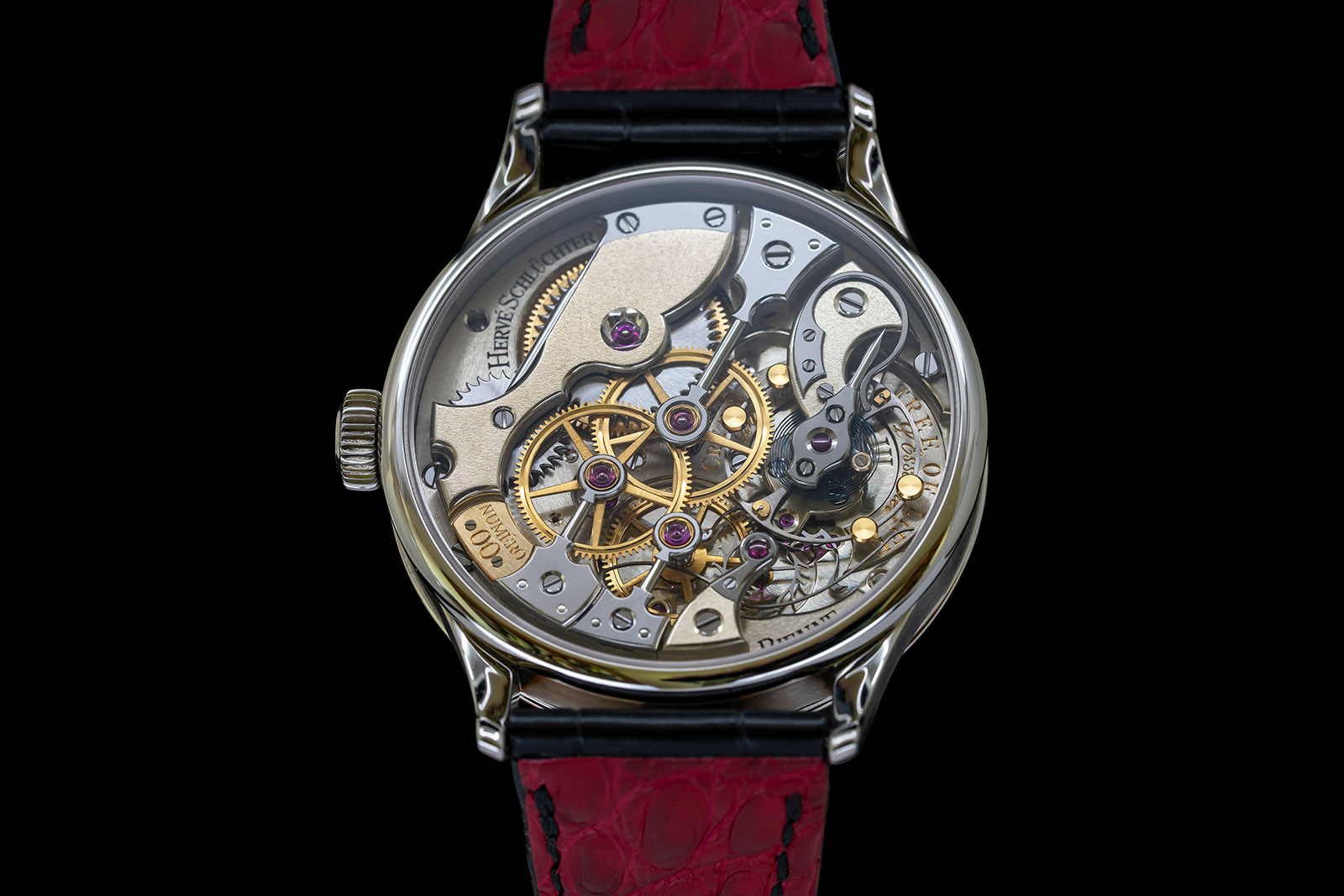
Matthew Lopez
Writer
One of the notable releases from the independents this year was arguably underrated as well – we don’t see too much talk about it – and that is the Kudoke 3. It is a simple concept thoughtfully executed consisting of a novel hour display relying on a three-armed hour hand and three-level hour scale.
The triple-scale brings to mind the distinctive seconds register seen on early Daniel Roth tourbillons, though Stefan Kudoke himself cites Glashütte Original, where he once worked, as his inspiration as the brand had a chronograph with a similar display. Admittedly, the split-level dial prioritises design over functionality, but it is legible once you get used to it, and more importantly it is distinctive without being gimmicky.
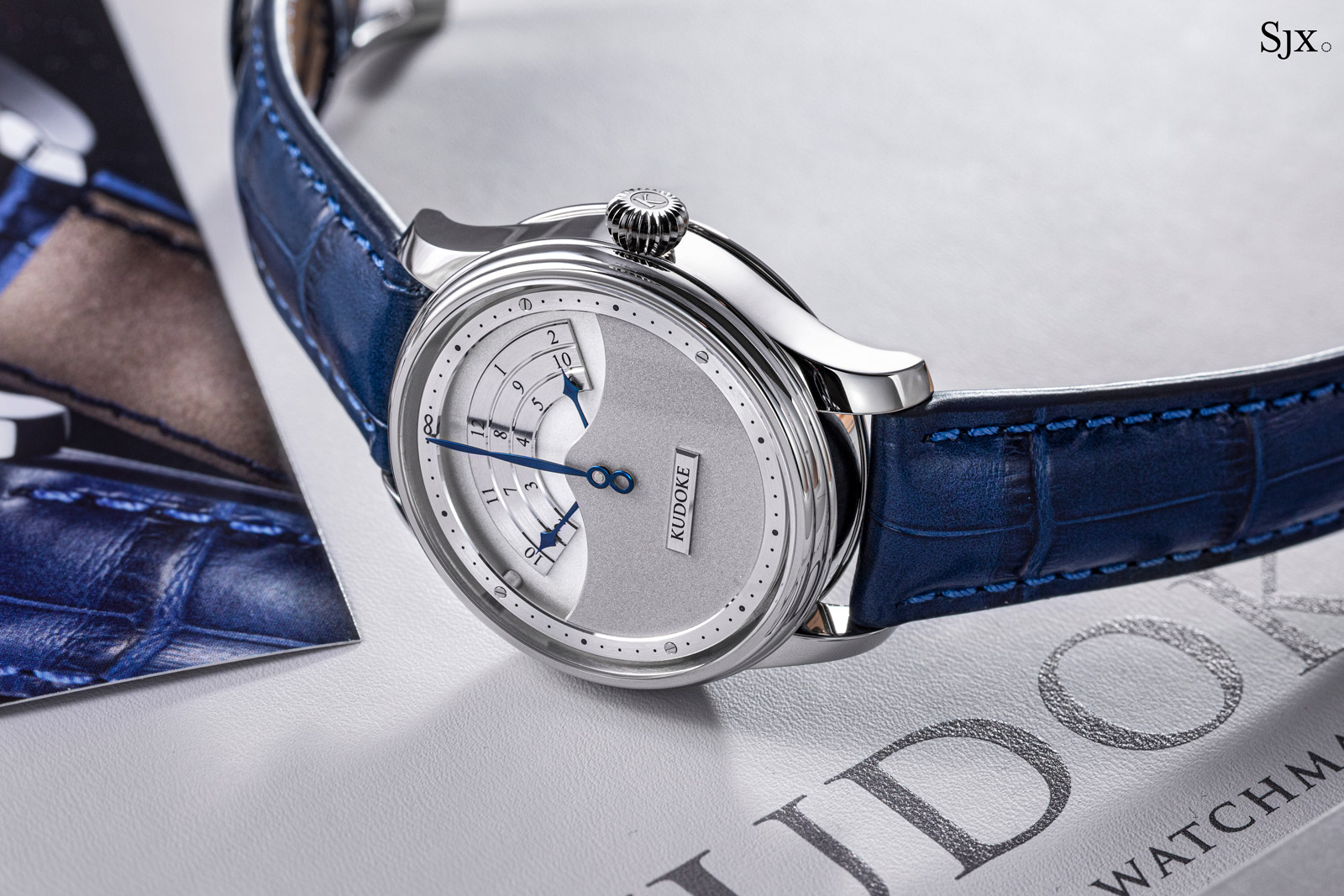
Slim at just 10.3 mm high, the Kudoke 3 continues the aesthetic of its predecessors, with a silvered, frosted dial and heat-blued hands that exhibit a high level of detail at its price point. The same can be said for the movement, the Kaliber 1, a hand-wound calibre developed in collaboration with Habring².
Based on the Habring²’s proprietary A11, the Kaliber 1 has been remodelled to take inspiration from 18th century pocket English pocket watches, including a gilt-frosted full bridge, engraved balance cock, and heat-blued screws.
The Kudoke 3 starts at €9,350 for the standard steel version. There are few other watches in this price range that have comparable originality and artisanal craftsmanship.
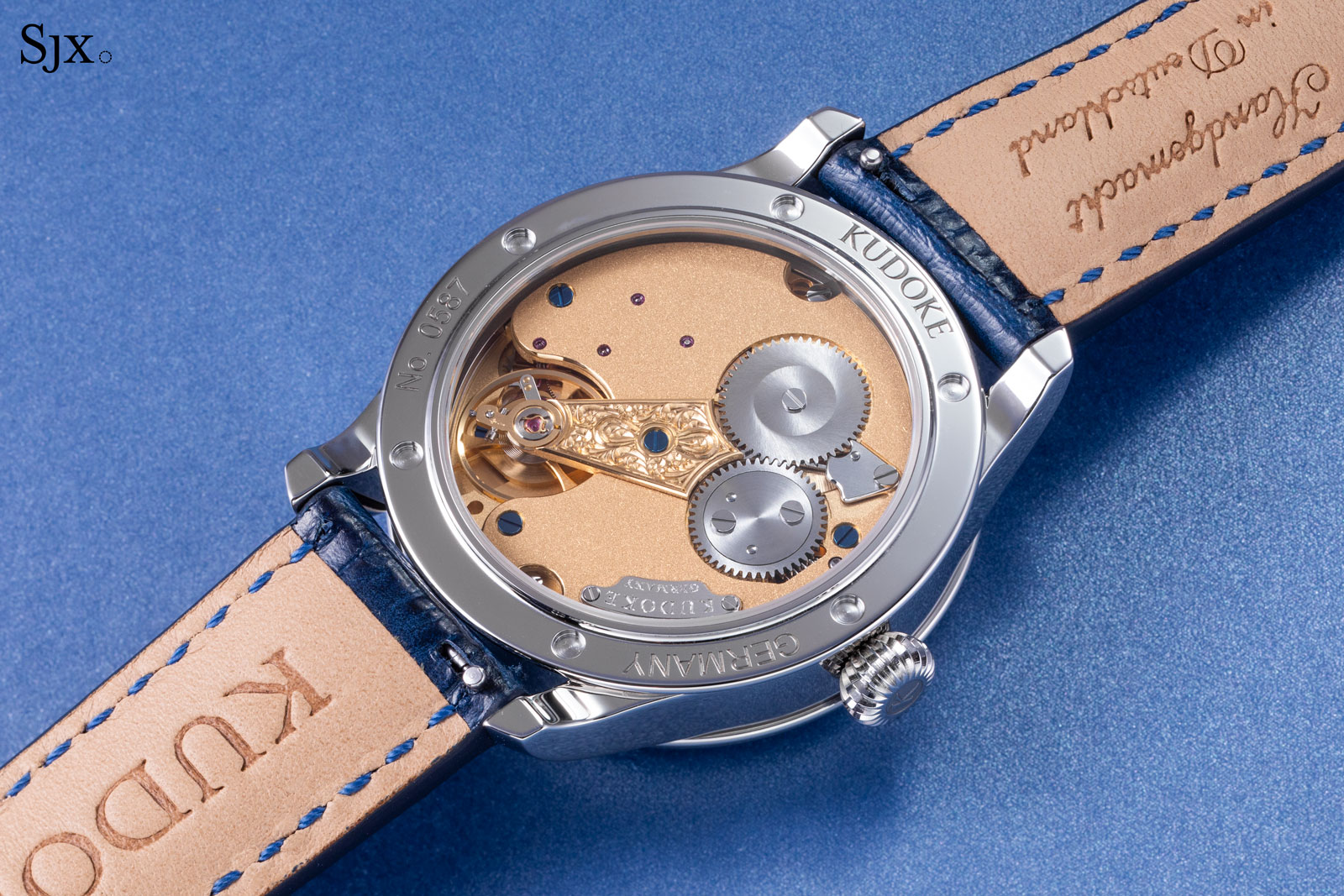
SJX
Conceived in a relatively short period of time, the Louis Vuitton x Rexhep Rexhepi LVRR-01 Chronographe à Sonnerie was a surprise at launch. Few expected the world’s biggest luxury goods marque to be collaborating with an artisanal independent watchmaker, albeit one of the industry’s fast-rising stars.
Louis Vuitton’s inaugural independent project was executed with Rexhep Rexhepi, the founder of Akrivia. A double-faced watch with displays on both faces, the LVRR-01 combines a novel set of complications. On the front is a tinted sapphire dial with five-minute tourbillon, while the fired enamel dial on the back has the chronograph with an integrated chiming mechanism that strikes once every elapsed minute. And under that all is an all-new movement that incorporates a constant-force gear train to drive the chronograph and striking mechanism.
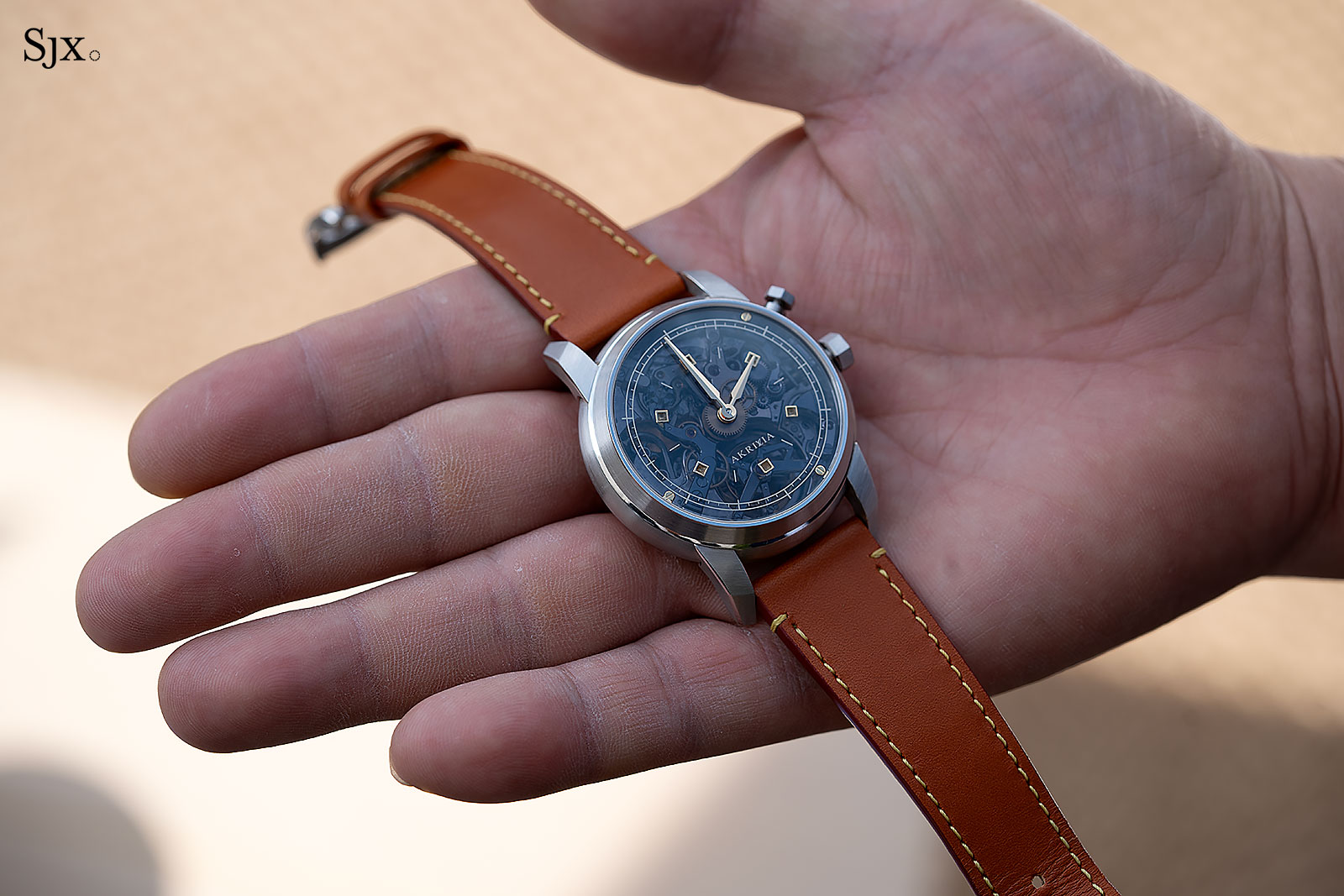
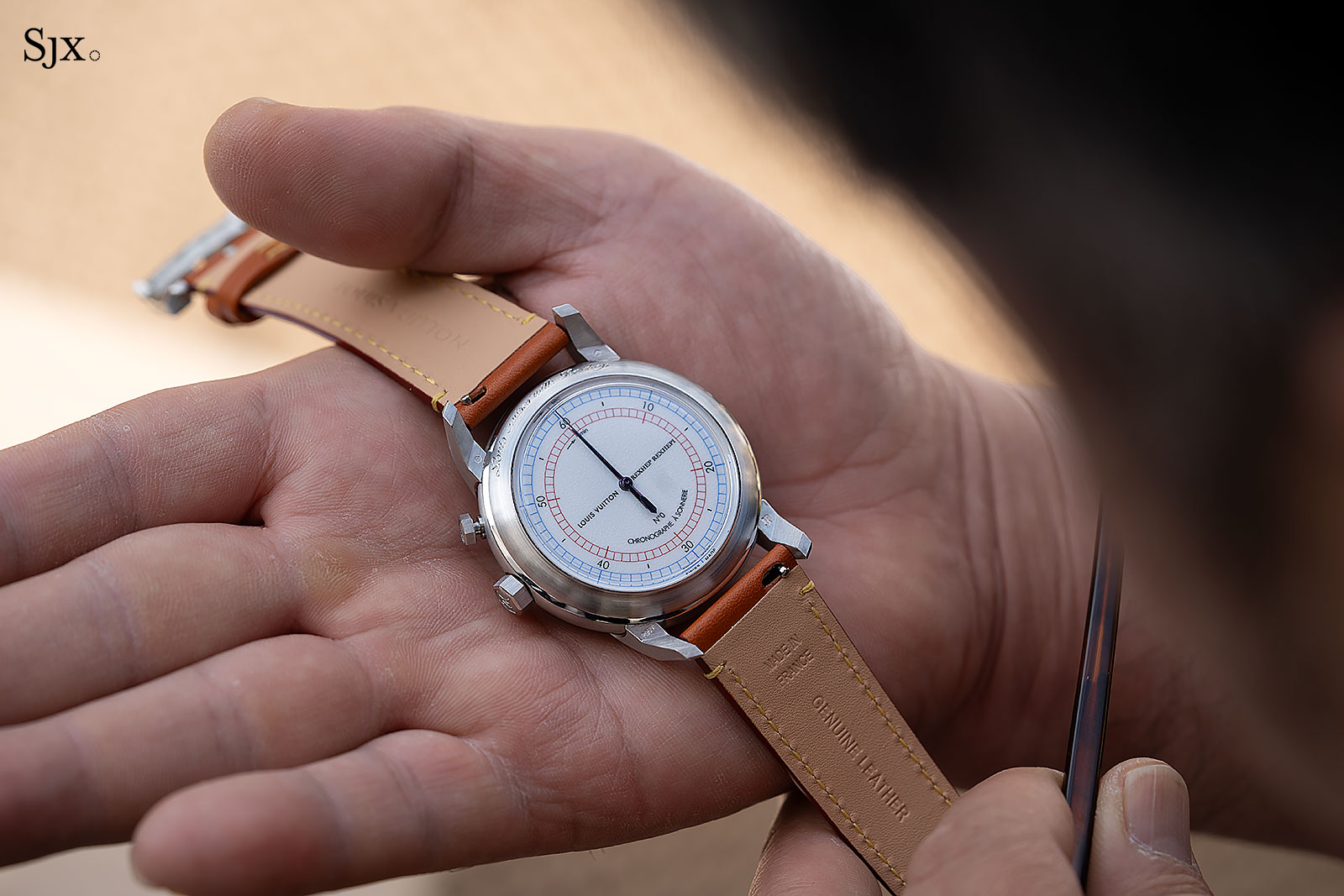
The LVRR-01 was launched with only a pair of prototypes, both of which needed refinements, most notably in movement cleanliness and the chunky lugs. But given the level of quality evident in Akrivia’s standard models, the production examples of the LVRR-01 will be impressive. Beyond the LVRR-01, however, the movement inside gives tantalising hints as to where Rexhep Rexhepi can go with the construction, particularly its double-sided nature and two-train, constant force set-up.
The Louis Vuitton endeavour is comparable to the long-ago Opus series by Harry Winston, and reflects the brand’s rapidly growing ambitions in high-end watchmaking. The upcoming collaborations will determine the significance of the project, but the LVRR-01 is a promising start.
And representing another segment of independent watchmaking entirely but no less worthy is the Habring² Chrono-Felix Top-Second, a watch that encapsulates the Austrian brand’s specialty of affordable but interesting watches.
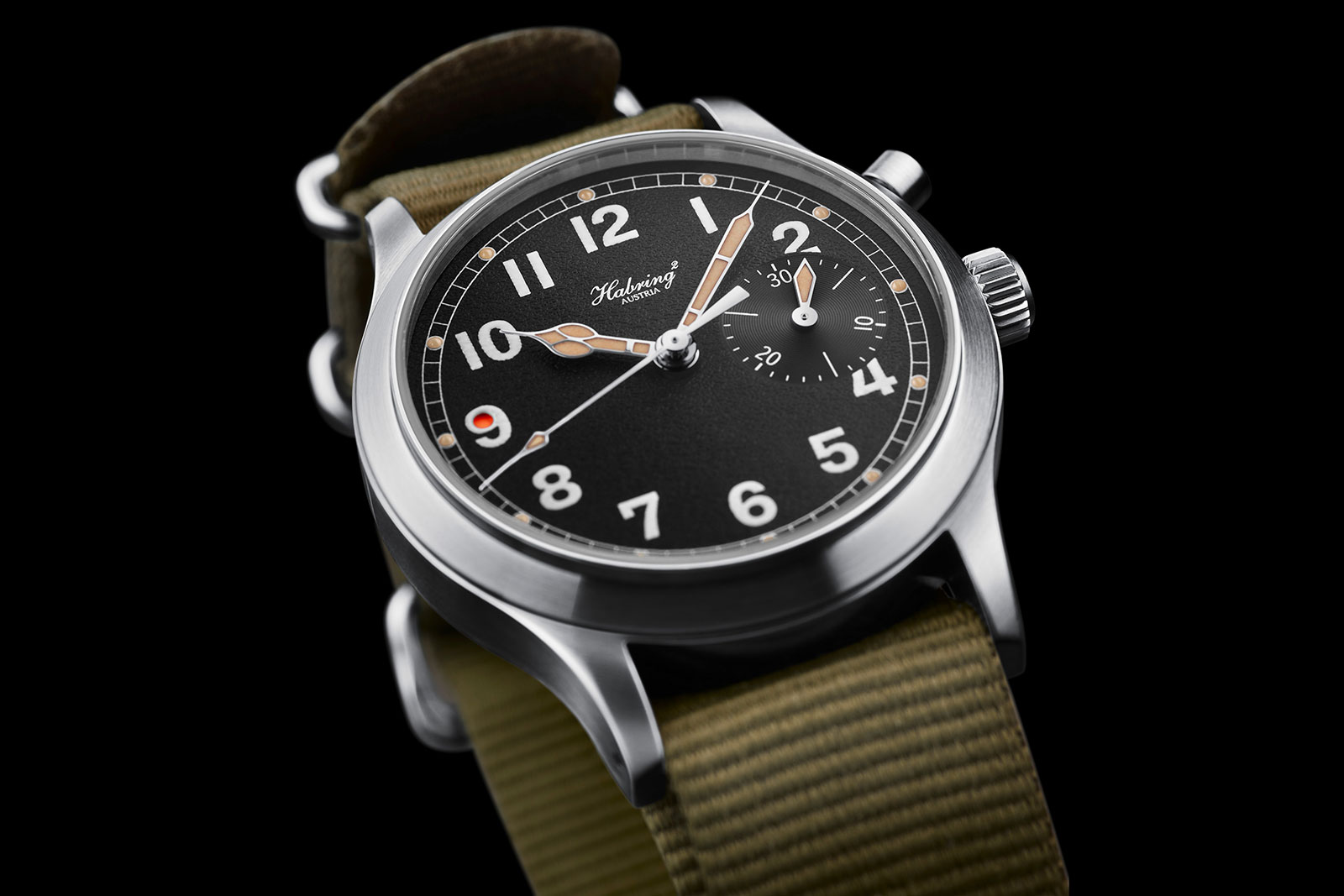
The Top-Second has a discreet seconds indicator at nine o’clock – literally inside the “9”. Inspired by a similar 1960s complication, the indicator consists of a propeller-shaped discs that completes one revolution every five seconds. As a result, the aperture within “9” turns orange every 2.5 seconds, showing that the watch is running but without needing to start the chronograph.
Given the minimalist design of this chronograph – just elapsed seconds and minutes – the novel seconds indicator is ideal since it preserves the clean aesthetic of the dial without taking away from functionality.
Back to top.

